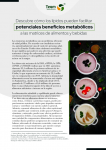Olive oil sales slumped 7.1% YoY in December as Airbus tariffs prompted drop-off in promo activity

Last October, scores of EU-made goods from packaged Spanish olive oil to specialty cheeses became subject to a 25% retaliatory tariff as they entered the US to counter the adverse effects of subsidies from EU member states to Airbus, which are claimed to have harmed US civil aircraft makers such as Boeing.
While the tariffs were designed to punish the EU, they are being paid by US importers and passed onto US consumers, causing a host of players in industries entirely unrelated civil aviation to suffer, food companies on both sides of the Atlantic have argued.
Some affected brands have put up retail prices to reflect their increased costs, which dampened sales, but the sales slump highlighted in the Nielsen data for December primarily reflects a drop off in trade promotions across the category, as brands across the category revised spending plans amid the uncertainty over tariffs, claimed the North American Olive Oil Association (NAOOA).
Companies plan promotional activity months in advance, and back in the spring and summer of 2019, key stakeholders didn’t know which kinds of olive oil would be affected by the potential tariffs, NAOOA executive director Joseph R. Profaci told FoodNavigator-USA.
Back then, he added, it was looking like olive oil from multiple EU countries could be hit with tariffs of up to 100%, and many brands responded by cutting promo activity scheduled for later in the year.
Continued uncertainty
But now we know that only packaged Spanish olive oil is affected (so not bulk oil from Spain, or oil from other EU countries), doesn’t that mean promotional activity will return to normal?
Not necessarily, said Profaci, who said the industry is now gearing up for the second wave of tariffs, and there is just as much uncertainty.
“Now they are considering ratcheting things up and putting everything back on the table. Next time maybe it will be something else. The USTR (US trade representative) is back considering up to 100% tariffs on olive oil from Spain, Italy, Portugal, Greece and France. We're hearing that there may be some decision in the middle of February."
So how big of a deal are the 25% tariffs on packaged Spanish olive oil?
A big deal, argued Profaci, who noted that Spain is by far the world’s biggest producer of olive oil and that US domestic producers only account for a small percentage of domestic consumption, and cannot pick up much slack if the supply or price of imported oils is impacted by tariffs.
“There’s also a lot of olive oil that’s shipped in bulk from Spain to Italy that’s packaged there and shipped to the US and when it comes in, it’s subject to the tariffs."
‘Olive oil has already lost meaningful market share to less healthful oils’
He added: “Olive oil has already lost meaningful market share to soybean oil, canola oil and peanut oil in the short months since the initial tariff announcement. Price is already a barrier to low-income consumers adding more olive oil to their diets.”
*Total US xAOC including convenience stores four weeks to Dec 28, 2019 vs four weeks to Dec 29, 2018. The Nielsen data also shows that US retail sales of olive oil were down -1.3% in the 52 weeks to Dec 28, 2019, while average unit prices were down -1.7%. Unit sales were up +0.4%.
















